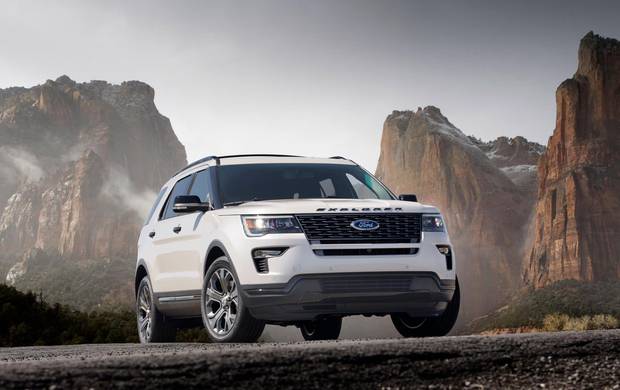Ford – confident that SUVs will represent more than 45 per cent of non-premium vehicle sales by 2024 – introduced an upgraded 2018 Explorer Monday ahead of the New York International Auto Show. Firm in this belief, Ford said it plans to add five new SUVs to its North American lineup over the next three years.
Meantime, in Los Angeles, perhaps as an indication of how automotive companies are meeting the market demands of the present while anticipating the future, Ford displayed a hybrid version of the Fusion police car. It's much more frugal on gas than its predecessor, averaging 6.1 litres/100 km, compared with 13.1 litres/100 km for the Ford Taurus Interceptor sedan.
Two prominent market segments, millennials and baby boomers, are demanding upgraded technology and functionality in their SUVs, Ford says.
The 2018 Explorer features an optional 4G modem with WiFi hotspot for up to 10 devices, plus the company's SYNC 3 infotainment system. The WiFi will work up to about 15 metres away from the vehicle – ideal for camping and tailgating.
SYNC Connect allows drivers to start, lock, unlock and locate their vehicle remotely, and to access diagnostics.
An optional "Safe and Smart" package includes: adaptive cruise control; collision warning with brake support to help prevent possible accidents; blind spot warning; cross-traffic alert to warn drivers when backing out of a parking space, such as in a shopping mall, when vision is obstructed by a vehicle alongside; lane-keeping that detects road markings with a camera system and vibrates the steering wheel when the car drifts; and an automatic high-beam switch to low beam when there's oncoming traffic.
Technology holdovers from the 2017 Explorer include active park assist to help with parallel and perpendicular parking; park-out assist to allow drivers to move away from parallel spots; and all-wheel drive.
There are style refinements and four new colour choices.
An LAPD officer unveils one of two new Ford Fusion hybrid police cars at Los Angeles Police Department headquarters on April 10, 2017.
David McNew/Getty Images
Meantime, the Associated Press reported that the police pursuit version of the hybrid Fusion sedan will feature a 2.0-litre four-cylinder engine and a 1.4-kilowatt lithium-ion battery.
While not as fast as the gas-gorging Fusions in service with police forces around North America today, it has achieved a "pursuit rating" from Michigan and Los Angeles forces. A driver holding down the throttle for five seconds will send the car into into pursuit mode. It will employ both the electric motor and the gas engine for peak performance while also being durable enough for tough duties, Ford said.
As police cars spend a lot of time idling – consider the time it takes to write a ticket, or to wait in radar traps – the hybrid has a big advantage because the gas engine will shut off while the battery powers flashers, radios and computers. When the battery needs charging, the engine will restart.
